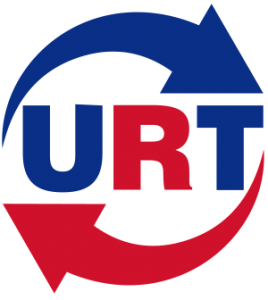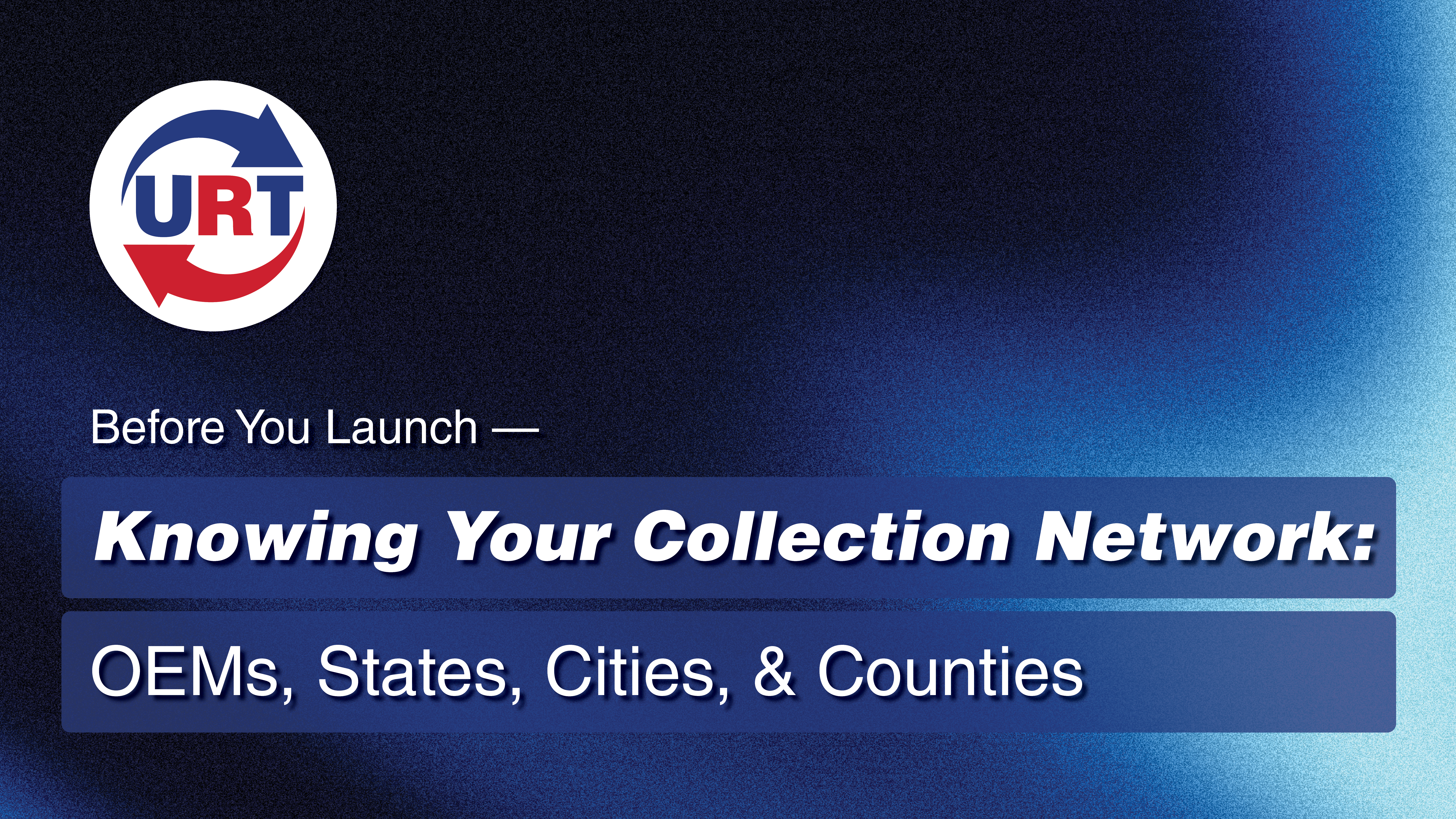By: Lisa Kneller
The Power of the Right Network
In today’s increasingly complex regulatory and sustainability landscape, who collects your products—and how—is just as important as what happens next. Whether you’re an OEM, a municipality, or a program manager, understanding your collection network is key to operational success, compliance, and customer satisfaction.
At URT, we’ve seen firsthand how varied collection networks can be—from statewide e-waste programs to municipal drop-off events to direct OEM takeback logistics. Each model has its strengths, but not every model works for every organization. Knowing your options—and your partners—is the foundation for building a network that works.
What is a collection network?
A collection network refers to the organizational and geographic structure through which products are collected, processed, returned, or recycled. This includes:
- OEM-operated facilities (brand-owned)
- State or federally designated centers
- County and city-run drop-off sites or events
- Non-Profit organizations (Habitat for Humanity, Goodwill)
- Big Box Stores
- Authorized partners (e.g. recyclers, repair centers, reverse logistics providers)
Step 1: Map your network landscape
To “know” your network, start by mapping who is involved at each jurisdictional level:
- Who handles returns under OEM programs?
- Which state agencies or county/city facilities are licensed or funded to collect material?
- Are there local community events or municipal reuse initiatives?
Identifying every node, its location, and primary responsibilities gives clarity on your options—even nuances like licensing, compliance, or capacity.
Step 2: Profile the players
Once mapped, gather key data:
- Throughput capacity (volumes processed per month)
- Service area (state‑wide vs. county‑only vs. local city)
- Regulatory role/authority (e.g. landfill diversion mandates, electronics recycling laws)
- Cost and revenue models
- Specialties or limitations (hazardous materials, large equipment, lean logistical footprint)
This helps you see strengths, gaps, overlaps—and where demand may exceed supply.
URT supports a wide range of customers—OEMs, municipalities, and retailers—by customizing service models that match throughput needs, regulatory requirements, and logistical complexity. We’ve also developed internal tools to help clients identify risk areas and opportunities within their network.
Step 3: Determine your operational needs
Consider your business model and requirements:
- Do you need state‑wide access or just specific counties/cities?
- Is it high volume centralized collection or low‑volume local drops?
- Do you require compliance oriented partners (e.g. mandated e-waste programs)?
- Are you seeking speed, flexibility, geographic reach—or lowest cost?
This step helps avoid mismatched partnerships and enables you to build a more resilient, goal-aligned network.
Step 4: Choose the right “Type” of Network
Generally, you’ll fit into one of several models:

Step 5: Benchmark and Pilot
Once your model is selected, test and measure:
- Benchmark performance metrics: cost per item, speed, customer satisfaction, compliance accuracy.
- Pilot different modes in select regions: test OEM direct vs. state‑run vs. municipal drop‑off.
- Track outcomes—what works best regionally may not be optimal in your home county vs. broader state markets.
URT’s data reporting capabilities make it easier for clients to measure performance across regions, allowing for smarter decision-making and future adjustments.
Step 6: Develop Alignment & Execution Strategy
With the right network partners in place, focus on operational alignment:
- Negotiate clear service-level agreements with partners.
- Create dashboards to track volumes, turnaround time, exception rates, and compliance metrics.
- Provide training or standards to ensure uniform service across counties or cities.
- Use metrics to adjust network mix: if county capacity saturates, shift more volume to OEM or state centers.
As your network evolves, URT can serve as a centralized partner to help manage relationships, logistics, compliance, and reporting—simplifying complexity across the board.
The Value Added: Why the Right Network Drives More Than Compliance
A well-structured collection network isn’t just a requirement—it’s a competitive advantage. When designed intentionally, it delivers:
- Stronger Brand Integrity- Ensure customers have positive, secure, and reliable collection experiences—building trust in your program and brand.
- Regulatory Peace of Mind – URT’s extensive compliance expertise and certifications help clients navigate evolving regulations without added stress.
- Data-Driven Decisions – Track and optimize in real-time—improving service, reducing cost, and ensuring transparency for ESG reporting.
- Operational Efficiency – The right match between partner and task reduces transportation miles, downtime, and redundancy.
- Environmental Impact – From e-waste to IT assets, efficient networks enable better diversion outcomes and faster movement toward circularity.
- Stakeholder Alignment – URT supports coordination across multiple levels of government and private entities—streamlining communication and execution.
Final Thoughts
Understanding who your collection network is and what they offer—for OEMs, states, counties, and cities—is critical. By mapping, profiling, and aligning your network with your operational goals, you can create a structure that maximizes performance, minimizes risk, and supports long-term sustainability.
At URT, we specialize in helping organizations build and optimize smart, scalable collection networks. Whether you’re starting from scratch or improving what already exists, we’re here to help you align logistics, compliance, and sustainability for long-term value.

